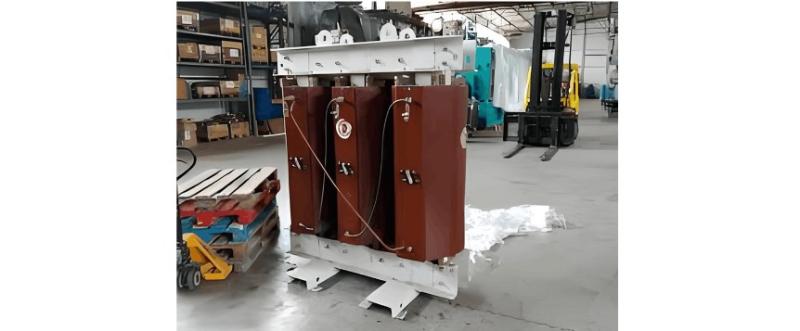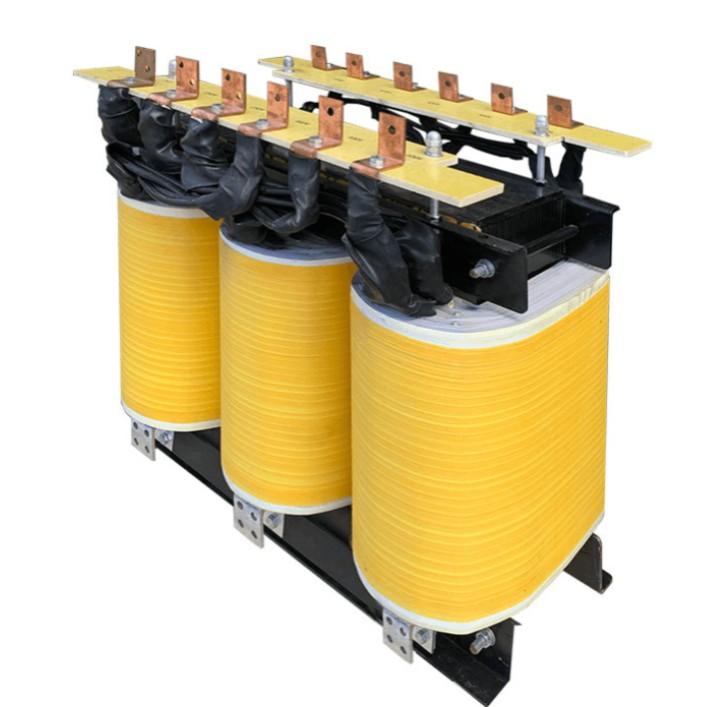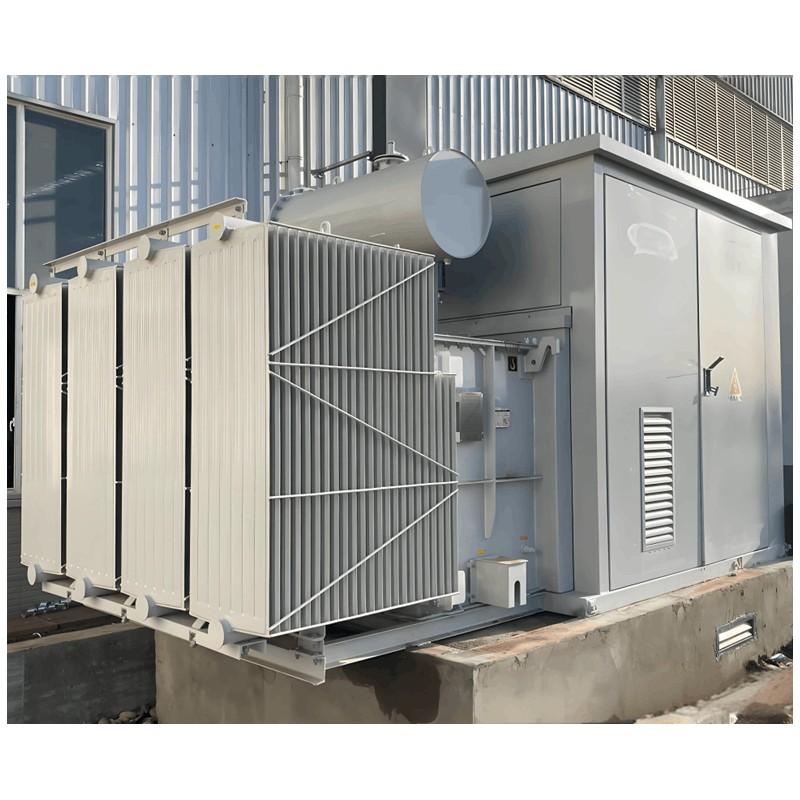Nivîska Bihha Mezinê ya Sisteman SST
Di hêla ku piramerdên SST di çavdaneve de ne, vêkariyên û rêzikên tîxistinê ji bo her du pelancên navendî û derbarî nirxên wan naha bûn. Pirsa dema wekî 4-5 RMB per watt pêşniyara xwe kiribû. Li ser mînakê bi tevahî 2.4 MW SST, li vir 5 RMB per watt, niha dema sisteman da yê din dibêje 8 milyon-10 milyon RMB bibiye. Berhêlê ber bi projeyên pilota di data centerên Amerika û Ewropayê de (di navbera Eaton, Delta, Vertiv, û serseriya lojistikê yên binnirx) ve hatine çêkirin, ku cihewa prototipan di faseyên R&D de û zeviya bistenda bardestanê nehate stabîl e.
Bardashtiya Nivîska Bi Modulan Sisteman SST
Li vir 5 RMB per watt, sisteman da dibe divarî ye bi pênc modulên mezin ên jêrîn:
Modulê Dikandker: 40-50% bardasht, ~2 RMB/W. Ji bo semikonduktoran guçê yên SiC, GaN, an IGBT-based çareser.
Transformatora Dastîra Bilind: ~25%, ~1.5 RMB/W. Di hêla ku materyalan amorfik bikar bihnê lê bêne dest bi peyda kirina permeability bala, herzêna bikar, û istabîlîya termal.
Kontrol & Bistenda Guçê: ~15%. Ji bo switchgear DC 800V (konvansiyonel an solid-state switches yên dawî) û panelên bistendana.
Tikandin (Supercapacitors & BBU): ~11%.
Strukturê Qefele & Sisteman Serbixebitina: ~8%.
Rêndîyan Din û Ferqên Nivîska Navendî û Derbarî ya SST
Rêndîya nivîska SST di dikarin de hate peyda kirin ku bipeydeheva serkeftîn û serkeftîn. Pelancên ziyan û China (bîg. Jinpan, Sungrow, û firmên ku ji komponentên aselan dest bihnê) li ser vê bendê binînin. Di dawî de, nivîska navendî hate peyda kirin ku werin girta nivîska Panama power systems. Unita 2.4 MW Panama power bi nivîsa 1.5 milyon RMB; hatine peyda kirin ku ji salan 2030, nivîska SST navendî piştî ku rafînî bibiye 2 milyon RMB bibiye. Pelancên ziyan û China hatine peyda kirin ku ji salan 2027-2028 vêkariyên banyîn bikin, pelancan wêge Schneider û sahîn di hêla ku SST yên bikin, ji bo mass production di salan 2030 de.

Di Amerika Navendî de, nivîs bihêla ku bede 4-5 her çendî zêdetir ji China be. Pêşniyarên 20-30% nivîsê li ser 2027-2028 hate peyda kirin, lê bi rêzikên bistendana bardestanê, tarîfên, û strukturê serbazînê, serbazîna nivîsê nehatiye qesetir ji China be.
Xusiyetên Teknikî û Rezhayên SST û Amerika Navendî
Amerika Navendî bi rezhayên heyî naha karkerî, û di hêla ku rezhayên 35 kV û 20 kV SST yên bikin, ji bo ku voltajên her çendî tenê zafî yên integrasyonê yên bingehîn û optimizasyona efektiyaya bibin. Cihaz û partên bi standardên Amerika Navendî yên bikin ji bo partên navendî yên bikin ferqên mezin dibin.
Xusiyetên Konfigurasyonê SST û Data Center
Di China de, 2.4 MW prototype bi serestiyekirina bikin, lê di Amerika Navendî de, 3.5 MW bi serestiyekirina bikin—ji bo ku voltajên sistem û guçên levelên ferq dibin. Ji bo data center bi 2.4 MW IT load, du unita SST bi serestiyekirina bikin, ji bo 2N redundancy design.
Navendî û Derbarî Markets û Xusiyetên SST û Çendî û Pelancên China?
Ji bo product û serestiyekirina, navendî û derbarî Markets û SST û Çendî û Pelancên China ferqên mezin dibin—ji bo gray-zone power equipment û data center (bîg. insulation performance û circuit breaker, sealing û cooling requirements û transformer efficiency). Vê faktorên di hêla ku teknolojîya SST yên bike dibin.
Pelancên China nehatiye bî problem û serbazînê, lê bi hêviya standartên, certification, û serestiyekirina bikin.
China’s HVDC û SST û Development û North America?
Ji bo pratîk, rate of increase in rack power di China de nehatiye bî urgent û North America. Top-tier GPU supply limited di China de, û local vendors focus more on demands from Tencent û Alibaba. Lâkin, gray-zone power equipment nehatiye bî problem û serbazînê.
Global presents incremental opportunities. Focusing solely on the domestic market risks falling into cutthroat competition. Chinese firms can become part of the SST supply chain by exporting basic components, supplying high-frequency transformers or rectifier modules, and conducting R&D on equivalent load racks—where restrictions are less stringent than for GPUs.
Which Chinese Companies Could Interface with NVIDIA Like Eaton or Delta?
Integrated players such as Jinpan and Sungrow have a higher chance of entering the SST supply chain, as cloud providers have limited internal expertise in power systems and will likely demand comprehensive system integration capabilities from suppliers.
Who Holds the Product Definition Power in SST?
The current situation is unique. The 800V white paper was released by NVIDIA, making alternative solutions like ±400V appear niche. Since GPU roadmaps are controlled by NVIDIA, its influence over SST is strong, and it can lock in shortlisted suppliers. However, if Google, Microsoft, or others pursue differentiated paths, they may jointly develop distinct technical routes with companies like ABB or Schneider. Currently, development is largely influenced by NVIDIA.
What Are the High-Barrier Technologies in SST?
Two key areas:
Solid-State Switches: SST requires millisecond-level response speed. Traditional low-voltage or DC switches cannot meet single-digit millisecond requirements. Domestic companies like Chint (Lingtai) and Zhengtai have prior research and applications in telecom fields, giving them potential entry opportunities.
Supercapacitors: Critical for short-term energy buffering with millisecond response—another key technological direction.
Other components are mostly integrated with rectifiers and high-frequency transformers, with relatively minor differentiation or difficulty.
Which Overseas Companies Excel in Solid-State Switches?
Leading overseas players in solid-state switches include Siemens and Schneider. Chint (Lingtai) has specialized expertise in certain types of circuit breakers.
Gaps Between Chinese and Global Leaders (e.g., Delta, Schneider, Eaton) in SST Integration? How Can Chinese Firms Enter Global Supply Chains?
Global leaders have full coverage across all segments. When integrating SST systems, they hold clear advantages in ecosystem, product R&D, integration capability, and business acquisition.
Domestic firms perform well in individual modules but rarely match companies like Siemens or Schneider, which cover low-, medium-, and high-voltage, and generation sectors comprehensively. Under profit-driven and scale-effect models, Chinese firms may lag slightly in niche applications.
More realistically, Chinese companies may enter the supply chains of Eaton, Schneider, or Vertiv as OEM/ODM partners, indirectly supplying the NVIDIA ecosystem. Independent entry into primary supplier lists remains immature. Once global players mature technologically and secure market share, Chinese firms may gain opportunities for private labeling and subcontracting.
Which Chinese Companies Can Provide Foundational Support for Overseas SST Deployment?
Jinpan and Sungrow are relatively leading. Jinpan has a factory in the U.S., and its brand has good penetration in North America. Additionally, Eagle Industries is building a plant in Mexico—having local manufacturing provides significant advantages in after-sales and maintenance support.
Why Can Chinese SST Prices Be Lowered? Is It Due to Lower Requirements for Certain Modules?
From the perspective of foreign brands, large price gaps between domestic and overseas markets for new products are common. For example, a typical high-voltage inverter costs about 200,000 RMB in China, but 800,000–1,000,000 RMB overseas—a difference of nearly 4–5x. Given that HV inverters and SSTs share similar components (rectifiers, HF transformers) and emphasize customization, a similar price gap is expected for SSTs.
The lower price of Chinese SSTs is not because requirements for medium-voltage HF transformers or HVDC modules are lower, but rather due to domestic competitive environment, industrial chain maturity, and historical pricing trends. Future factors like technological maturity and demand may influence the gap—possibly narrowing it over time.























